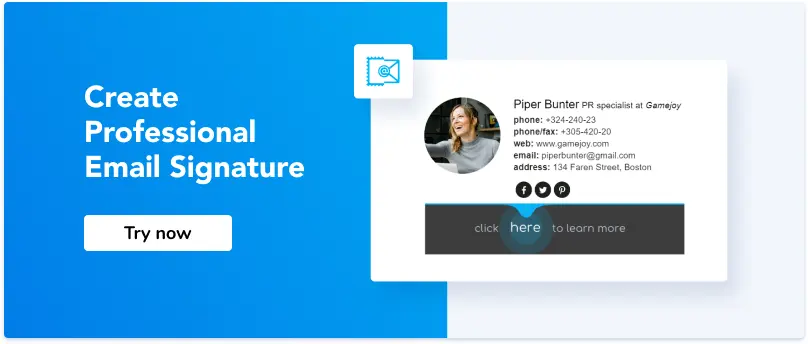How to Build Brand Awareness With Email Marketing
1. Make your emails synonymous with your brand
2. Use branded links
3. Provide consistency across channels
4. Get personal
Useful tools:
1. Newoldstamp - Email signature marketing
2. SendGrid - Email builder and sender
3. Boomerang - Tool for scheduling emails
4. Mailtrack - Email link opens tracking
5. Canva - Online tool for making designs
With the overwhelming increase and reliance on social media, as well as mobile marketing, some marketers overlook email marketing. But they shouldn’t. Email marketing is very much alive and not only is it one of the most cost-effective marketing mediums, but it is also one of the best to build brand awareness.
Email marketing is powerful because it is direct, it encourages long-term habitual interactions between customers and a brand, and it targets customers in a place where they visit every day - their email inbox.
Email marketing is also effective because it communicates to an engaged audience that has already signed up to receive emails. They are ready to become familiar with your brand through their inbox. They don’t have to seek you out to stay updated and you don’t have to spend money on advertising to lure them back to your website. It’s a win-win!
Employing an effective email marketing strategy will help you build strong relationships with customers, establish your brand name, increase your sales performance, and reduce your rate of email list un-subscriptions. In fact, a 2016 study of US marketers by Demand Metric and the Direct Marketing Association found that email marketing has a median ROI of 122% - more than 4 times that of social media, paid search, and direct mail.
So now that you know how effective it can be, here’s how can you effectively build brand awareness for your business with email marketing:
Make your emails synonymous with your brand
To establish brand awareness through email marketing, it is essential to make your brand an integral part of the emails you send. One of the first things to consider if you want to make your emails synonymous with your brand is to strategically add your logo to the email newsletters you send. This will make your business easily identifiable to users and build brand awareness of it.
Some research indicates that when logos are at the top left of a page, it significantly improves brand recall. In countries where people read from left to right, this is where a reader’s eyes first settle, and having a logo will help them immediately identify what they are seeing. Overall, readers tend to focus on the left side of what they read so this is the best way to capture their attention with your brand when they first open your email.
For your everyday communications and contact with customers, make sure your email signature is on-brand and features your logo. This will spread brand awareness and you can also use the opportunity to link to your latest content or offers etc.
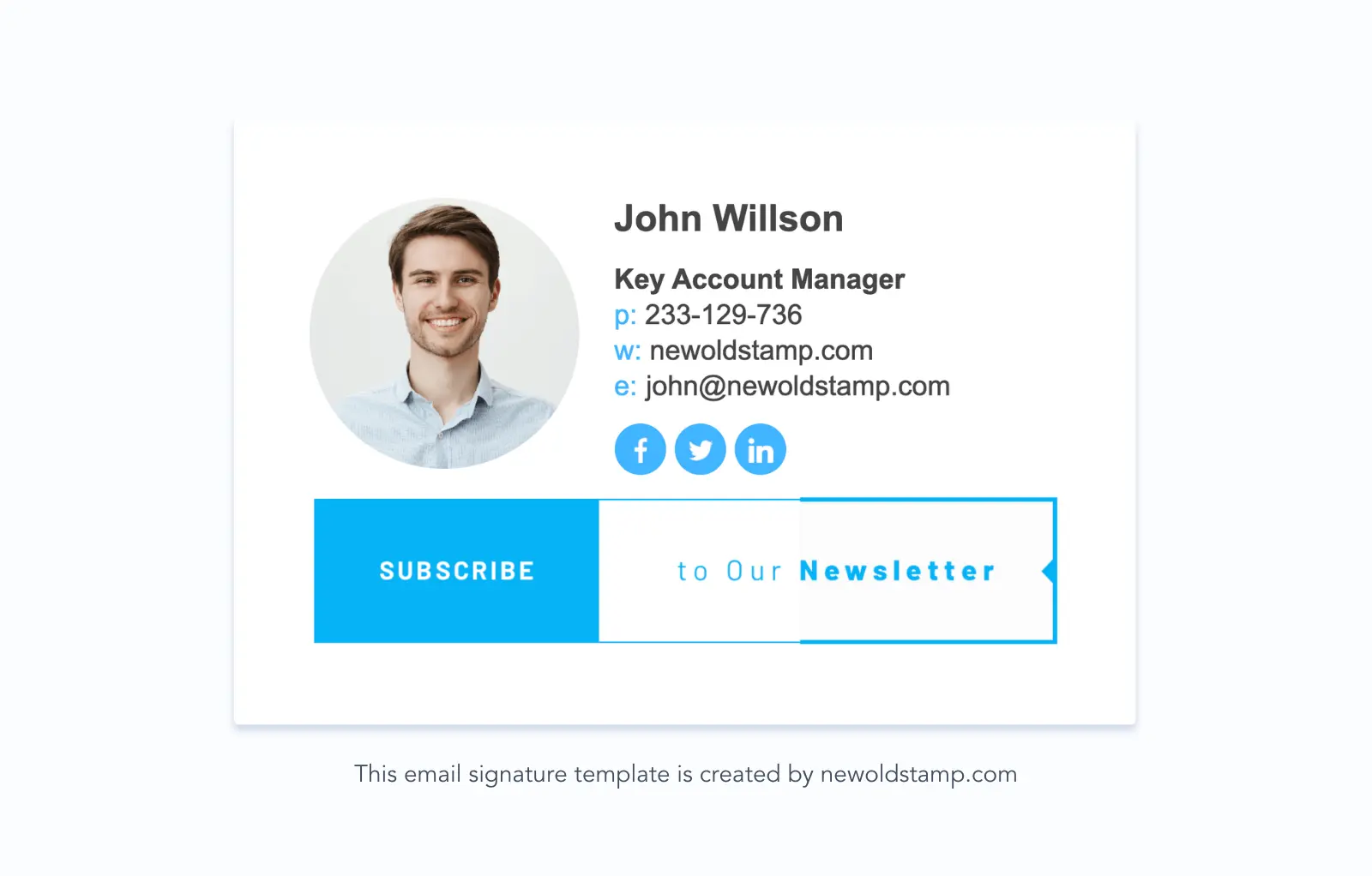
Other important things to consider in your emails are your brand’s signature font and colors. You’ll likely have a color that is associated with your brand already and when it comes to text, make sure to use an easy-to-read, professional font. Perhaps the same one you use on your website or for other marketing materials.
The type of images you feature and the layout of your emails should be on-brand too. Maybe your images will always be black-and-white or maybe they’ll always have your logo in the corner. Whatever you decide, keep it consistent and your emails will instantly be recognizable as yours.
Your brand’s theme should resonate throughout the email, making it easy for the customer to identify with your brand from start to finish. Consistency is key here - both for building brand recognition and for creating emails that your subscribers associate with your business. Remember, if a subscriber can’t identify your email easily, they could skip it or send it to spam.
Using email templates to make all your emails look familiar to your readers is imperative. Humans love consistent patterns, so they don’t have to learn to follow new ones. With a consistent email template, readers will have a clear understanding of the layout and know where they can find their favorite content, making it easy for them to browse through it fast.
Plus, using templates will make it quick and simple for your marketing team to put together its newsletter.
Pinterest does this well in its email listings recalling the layout of its actual website, which takes its brand awareness up a notch.
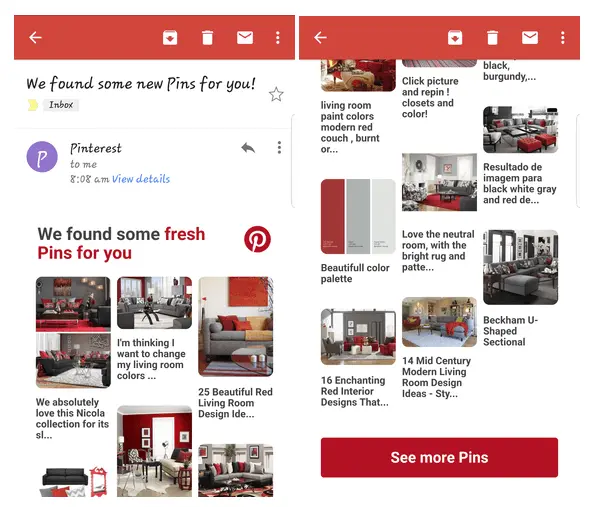
Use branded links
Including your brand name in your links is a simple but effective way to build brand awareness. It is effective across a range of channels but is particularly important for email marketing because it can stop your messages from landing in a spam folder.
Branded links are better than sharing a long URL because they are short, memorable, and visually appealing. While they are also more trustworthy and less likely to be blacklisted than generic short URLs.
They are great as a CTA in your email signature or for emailing customers links to your blog and supporting FAQs. This is an example of a link our support team recently shared: https://Rebrandly.Support/Remarketing
You can also use branded links to track the success of your email CTAs. By adding UTM parameters to your email links, you’ll be able to see exactly how many website visitors came to your site through each link. This is particularly useful if you are segmenting your email audience and sending various emails to each group.
Provide consistency across channels
As mentioned, consistency helps build familiarity among your readers, enabling them to easily identify your brand. In addition to consistent visual branding, you should also stay true to your personality, tone, and messaging to build trust with subscribers and let them experience what your brand is all about.
If your brand’s website and social media have a fun and informal tone, stick with this for your email marketing. If you promise to deliver weekly updates on technology when people sign up for your newsletter, don’t start sending off-topic mailings. If you said you’d send out one email per week, don’t randomly start doing daily emails. Most readers appreciate the consistency and if your mailings can give them that, they will stay engaged, develop a sense of habit, and grow to value your brand.
A good example of a brand that does this so well is AngelList, a website for startups and Angel investors. Their emails have been consistent in their tone, messaging, and frequency.
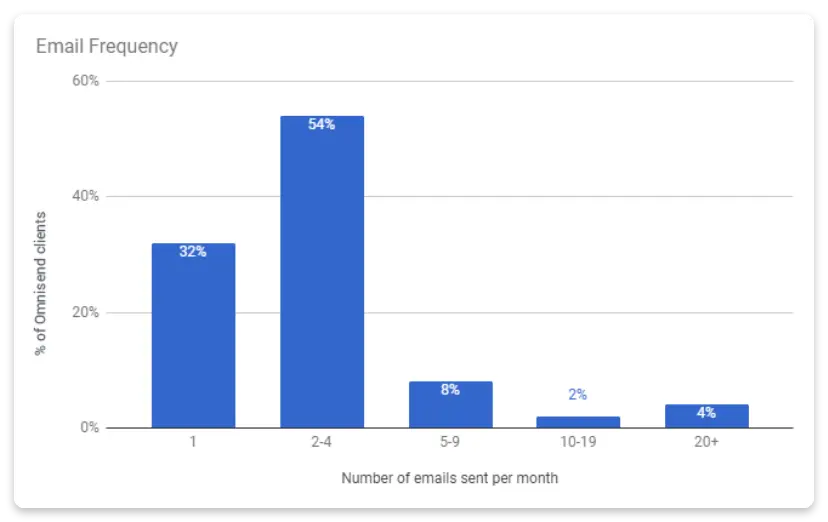
source: Snov.io
With consistency in mind, consider creating landing pages specifically for the people coming to your website through your marketing emails. If you’re giving an exclusive offer or to email subscribers, you don’t want them to click on a call-to-action leading to an irrelevant page. Having a custom landing page will allow you to continue the theme of your email for a consistent message and CTA, which will guide readers smoothly through the sales funnel. You can check out a great example of how cosmetics company La Mer did this in past campaigns here.
Get personal
Your content is a significant factor in building brand awareness through email. Not only should it be consistent in design, layout, and frequency as mentioned above, but it should also make an impact on your subscribers so that they remember your email and your brand.
Whenever possible, add some personal elements to your emails, such as a personalized greeting. But it’s also important to show the human at your brand’s end of an email, so people know they can respond. Featuring a strong sign-off and professional email signature is important, particularly for the likes of onboarding emails. You could even consider adding a CTA asking users to get in touch if they have any questions or feedback.
The more your email is personalized for a reader, the more they will feel recognized and appreciate your brand.
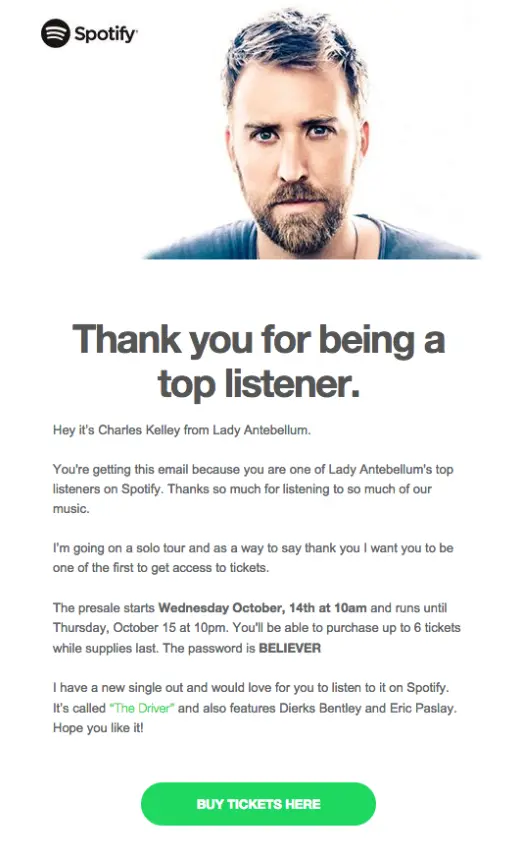 source: Hubspot
source: Hubspot
Pay attention to what engages and resonates well with your readers to hone your message. Gather data through surveys, A/B testing and analytics. A brand that is solely interested in sales will see lots of un-subscriptions. The best way to keep your customers engaged and loyal to your brand is by providing solutions to their problems, answering their questions, and enlightening them about your industry or other closely related topics that resonate well with them. If your how-to content gets click-throughs, make more.
Once you know your target audience’s needs, likes, and dislikes, you can create emails that are more memorable to bolster your brand’s awareness.
You can also segment your email lists to offer deeper personalization. Send different emails to current customers and prospects. If your newsletter is educational, divide your lists by the readers’ levels. For example, an email about marketing would be better sending different content to beginners and advanced marketers so both groups can stay engaged. Surveys will help with this.
Segmentation will increase open rates, decrease subscriber drop-off and foster confidence in your brand. There is also a higher chance of readers sharing your content with others.
Building brand awareness with email marketing isn’t an uphill task as long as you employ the right strategy to achieve this end. Make your emails synonymous with your brand, make them consistent with your other marketing, and, whenever possible, segment your emails to fit your audience’s preferences to give them a better experience that will leave them with a lasting impression of your brand.


